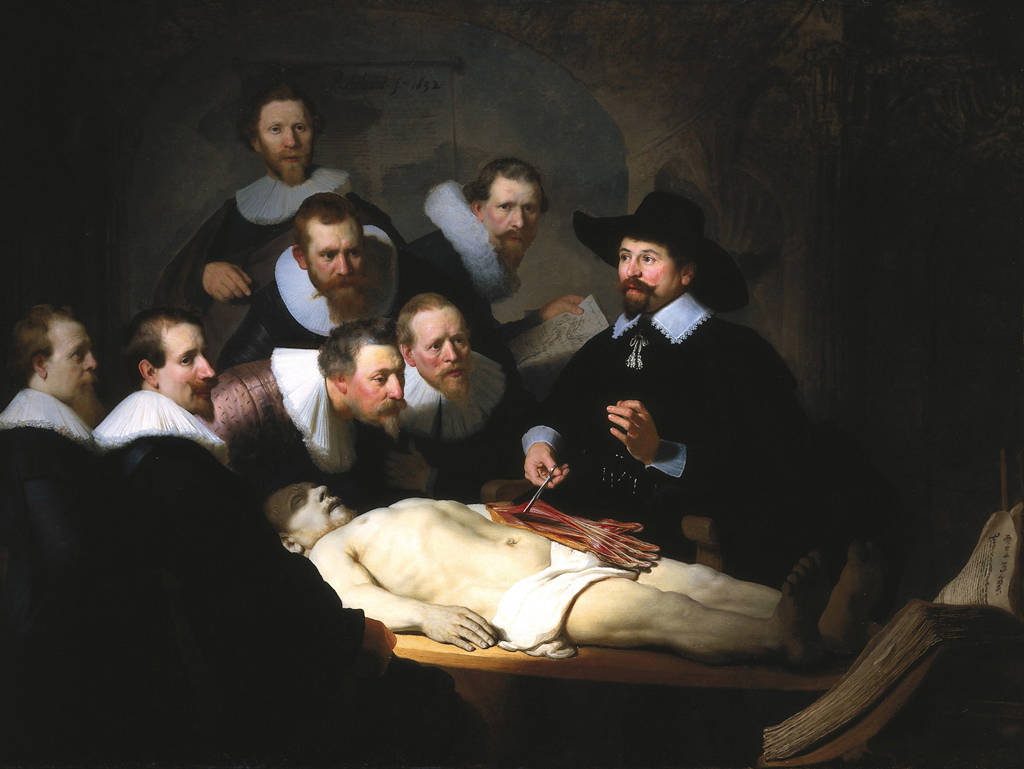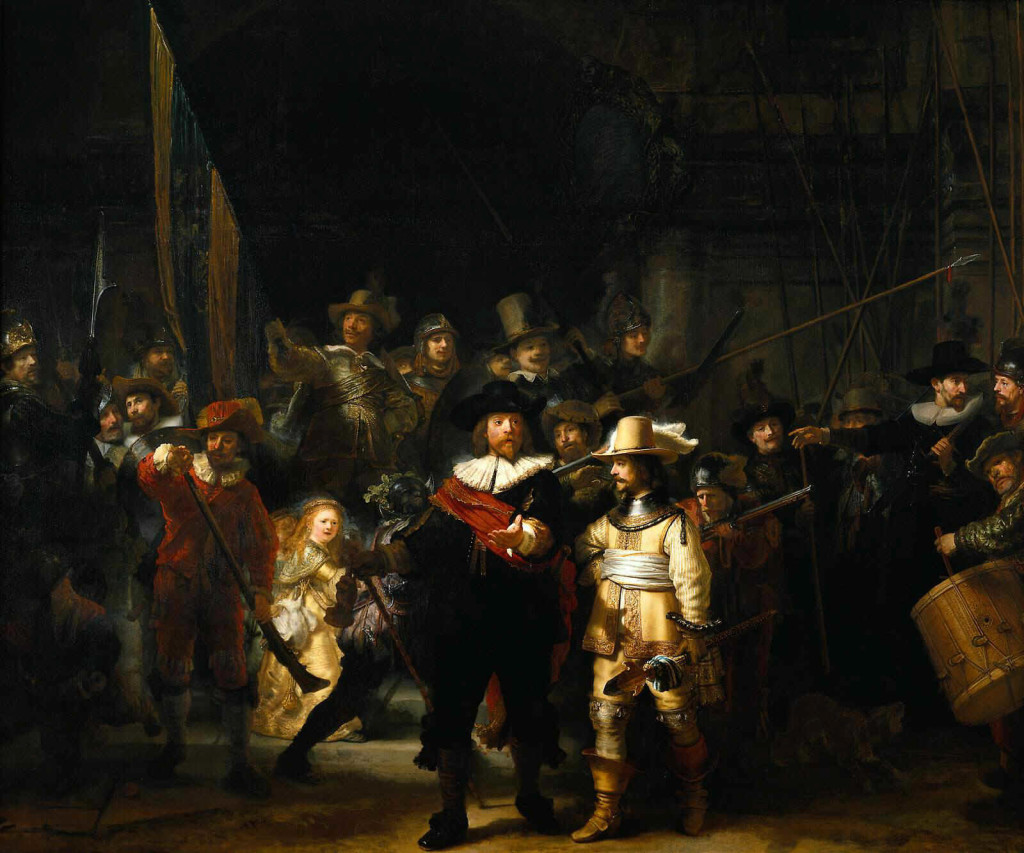Group portraits represent one of the most vexing problems a painter is ever required to resolve requiring as it may, expressive ingenities that defy standard compositional devices…
In a group portrait each member must be awarded their proportionate measure of interest and prominence. This poses a limitation of the painter’s freedom when arranging pictorial material, since it may impede his habitual progression towards his desired focal climax. When all the members share equal interest and importance, the key becomes involving them all in a composition that will hold water as interesting in itself.

—Rembrandt van Rijn (Dutch, 1606–1669). The Anatomy Lesson of Dr Nicolaes Tulp, 1632. Oil on canvas. 66 23/32 x 85 1/4 in. (169.5 x 216.5 cm). 146.
© Royal Picture Gallery Mauritshuis, The Hague—
Rembrandt’s issue in “The Night Watch” which was a large group portrait, was how to catalogue the features of the individual members of an organization and to create at the same time an inherently interesting picture. With some twenty figures to be included, Rembrandt decided to conceptually choose the device of incorporating them into the expression of a dramatic moment when the company responds to the captain’s order to march.

—How this effect of dynamism can be explained? Rembrandt has represented the exact moment in which the captain of the company has ordered the advance of his men, but this order seems to have not arrived yet to his subordinates. This tension between motion and immobility gives the picture an irresistible magnetism.—click image for source…
Here, in the group context, individual psychological delineation is rather homogenized unlike in his “The Anatomy Lesson” where an intact individual identity can be discerned rather than subsuming them to the activity of the moment as in “Night Watch,” which hence becomes primarily a rendering of light and movement organized in space that would be disrupted, ruptured, if our attention were called to it within a variety of psychological factors independently going about their business.
“The Night Watch” has long been a misunderstood work. It had been obscured by coats of yellowed varnish and layers of dirt that reduced once bright colors to murky gloom punctuated by figures. However, during WWII it was cleaned which revealed details of the background that had been obscured, thus bringing minor figures into proper relation with the others, and, now brightened by a yellow glow, it revealed members of the “night” watch occupying a spacious room into which early sunlight flows. ( to be continued)…
ADDENDUM:
Jonathan Jones (Guardian)see link at end…Instead of a distinguished company of worthy officers and well-trained men Rembrandt shows a baroque profusion of gestures and expressions, a raggle taggle crowd of comic types from an old soldier hunched over his gun to the preening figures of the militia captain and his lieutenant Willem van Ruytenburch. He also adds enigmatic details – why is there a little girl among the soldiers and why does light fall on her in such a moving golden glow?
No two faces point the same way: everyone is looking somewhere else and every figure is differently aligned. Instead of discipline, Rembrandt suggests something close to chaos. In British terms it is more Dad’s Army than Lady Thatcher’s funeral. So why is The Night Watch so stirring? Why is it considered a
ional symbol when it seems to mock the Dutch as part-time soldiers and foolish burghers?The comedy of this immense pairing is counterposed with tragedy. It is, truly, a watch through the night. The human, all too human company stand together against encroaching shadows. A soft, enfolding fog of night surrounds them. The light that illuminates them is a flash in the dark. They are all the more heroic for being so vulnerable, flawed and eccentric. Most of all, they stand together, as a human community. Read More:http://www.theguardian.com/commentisfree/2013/may/06/rembrandt-the-night-watch-netherlands-rijksmuseum





 COMMENTS
COMMENTS